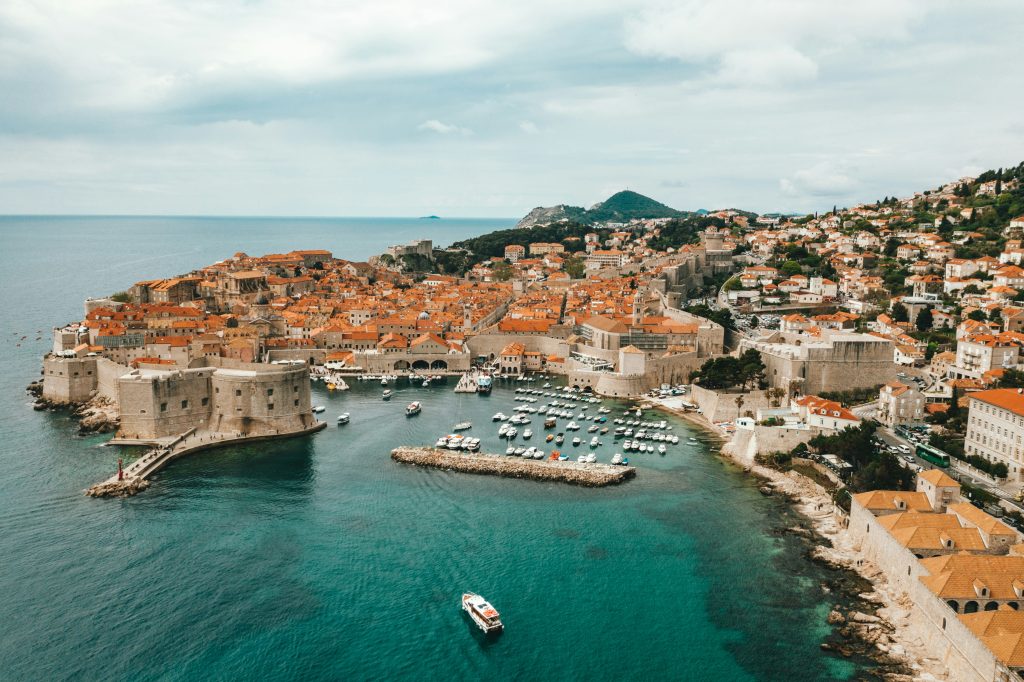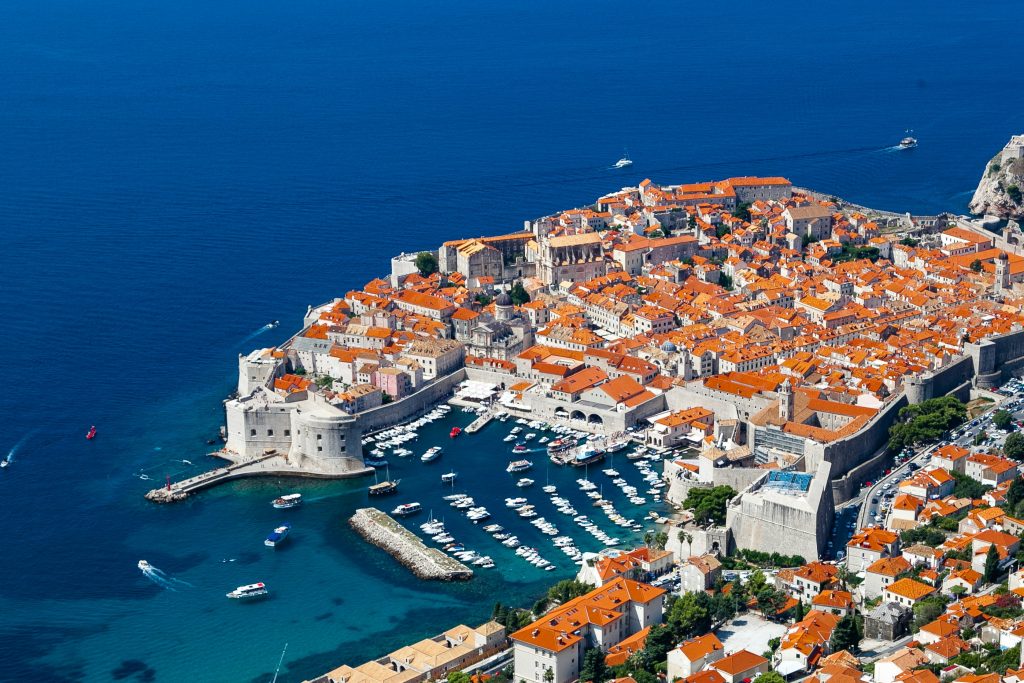May the 26th, 2024 – The Dubrovnik Republic existed from 1358 right up until 1808, but what caused its decline?
The Dubrovnik Republic was entirely autonomous, self governing and prosperous in many ways. Having had some of the best diplomats and negotiators of the time, the peaceful Republic never set about conquering or invading anyone, it lived almost exclusively on maritime trade and under the paid protection of the almighty Ottoman Empire, it enjoyed the very many socio-economic benefits that came with it.
An eternally jealous Venice, which saw Dubrovnik’s increasing power as a major threat to East-West trade and to ”business” in the Adriatic, attempted to bring down the Republic and make it a Venetian slave on numerous occasions, succeeding only once before being forced to withdraw its claim to Dalmatia under the Treaty of Zadar. Otherwise, the Republic, which was home to roughly 30,000 people (5,000 of which lived within the walls which still stand today), did exceptionally well for itself. Able to excercise customs tax cuts and freely access areas such as the Black Sea, which was then a no-go for non-Ottoman trade, was just a small part of the trade benefits the maritime republic enjoyed under Ottoman protection.
What goes up must always come down eventually, and the Dubrovnik Republic (Ragusa/Dubrovacka Republika), despite its extremely long run, was ultimately no exception. It reached its commercial peak in the 15th and 16th centuries before being conquered by Napoleon’s French Empire and then formally annexed by the Napoleonic Kingdom of Italy in 1808.
so – how did the dubrovnik republic meet its demise?

The beginning of the end for both Ragusa and Venice was marked by two important factors, the first of which came when the spice trade ceased to go through the Mediterranean as new routes were opened up by Portuguese exploration. The discovery of America also resulted in a major shipping crisis in the Mediterranean. These two significant events ironically saw Venice and Ragusa, two arch rivals, faced with the same extremely concerning issues.
After a couple of false starts, trading rights were granted to Ragusa in 1497 by Charles VIII of France, and then once again by Louis XII a few years later in 1502. The very first decade of the 16th century saw Ragusan consuls sent to France while their French counterparts were sent to Ragusa. All seemed relatively alright, to a degree, until a natural disaster struck…
The infamous 1667 earthquake struck, devastating the city and killing over 5,000 citizens, including the Rector. Only the powerful outer walls that can still be seen today were left untouched by the enormous quake, but the rest of the city, including all its infrastructure, was all but entirely razed to the ground. Naturally, the city was slowly rebuilt, but it took an incredible amount of time and even more resources, which were thin on the ground already. Of Dubrovnik’s significant public buildings, only the Sponza Palace and a section of the Rector’s Palace at Luža survived the disaster. The newly built city was all but a shadow of its former glory.
A decade later in 1677, Nikola Bunić and Marin Caboga travelled to Constantinople to attempt to prevent an imminent threat to Ragusa: Plans for the annexation of Ragusa to the Ottoman Empire were being laid. Several years later, the Ottomans were defeated in battle outside Vienna and the Ragusans continued their recognition of Ottoman sovereignty.
Despite continued recognition of Ottoman sovereignty by Ragusa, the Ottoman defeat in the Battle of Kahlenberg opened up a new world of seemingly bright new opportunity to Republic, as their ships could now anchor anywhere along the Dalmatian coastline. By 1699, the Ottoman Empire relinquished Slavonia, Dalmatia, Podolia, Hungary and Transylvania to the Poles, the dreaded Venetians and the Habsburg dynasty, who had been victorious. Venice, ever keen for petty revenge, threatened to completely surround Ragusa and cut off its inland trade, capturing a part of the Republic’s inland territory and edging ever closer to its border.
Naturally worried about the behaviour of the Venetians and about the rising possibility of Ottoman defeat, Ragusa’s senior figures hoped that the Austrians would take Bosnia and create a somewhat safer environment, but fortunately the Ottomans managed to keep control over the hinterland. Just as it had been previously, the relationship between Ragusa and the Ottoman Empire had been fairly amicable, and Ragusa yielded part of its coastline to the Ottomans as a preventative measure against potential Venetian attacks from the land. One of those relinquished pieces is Sutorina, a small piece of land which later became part of Montenegrin territory, and the other, perhaps much more well known, is modern day Neum (Bosnia and Herzegovina), the only piece of coastline Bosnia and Herzegovina possesses.
Things were very much okay for the Ragusans during the primary years of the French war as the Saint Blaise flag was of course, neutral. Owing to other circumstances, this made Ragusa become one of the Mediterranean’s top carriers. This unusual set of cirumstances allowed for the Republic to prosper in a way that had not been seen in a long time, given the worries about the French, the Venetians and the potential collapse of the Ottoman Empire, with which Ragusa had become so deeply intertwined.
Unfortunately, it wasn’t at all long before Ragusa was placed into yet another major dilemma, the peace treaty which followed the Battle of Austerlitz had forced Austria to relinquish their claim to Dalmatia to France. It was all much too close for comfort knowing that the Bay of Kotor belonged to the Venetians.
As the turn of the century edged ever closer and 1800 rolled around, Ragusa had established itself most absolutely and held a network of proper consular offices all over the world, but just six years later, a tired Ragusa surrendered to the French Empire. Pushed into a corner and in a desperate move to bring an end to the siege from the Montenegrin army and the Russian fleets, there was nothing else that could be done. In not so many words, the French rescued Ragusa. But the long, prosperous days of the autonomous Republic were over. Upon Napoleon’s entry in 1806, it was all merely a memory.
By 1808, it became official. The Republic was no more. Napoleon’s Marshal Marmont abolished the Dubrovnik Republic and it became part of the Napoleonic Kingdom of Italy.











